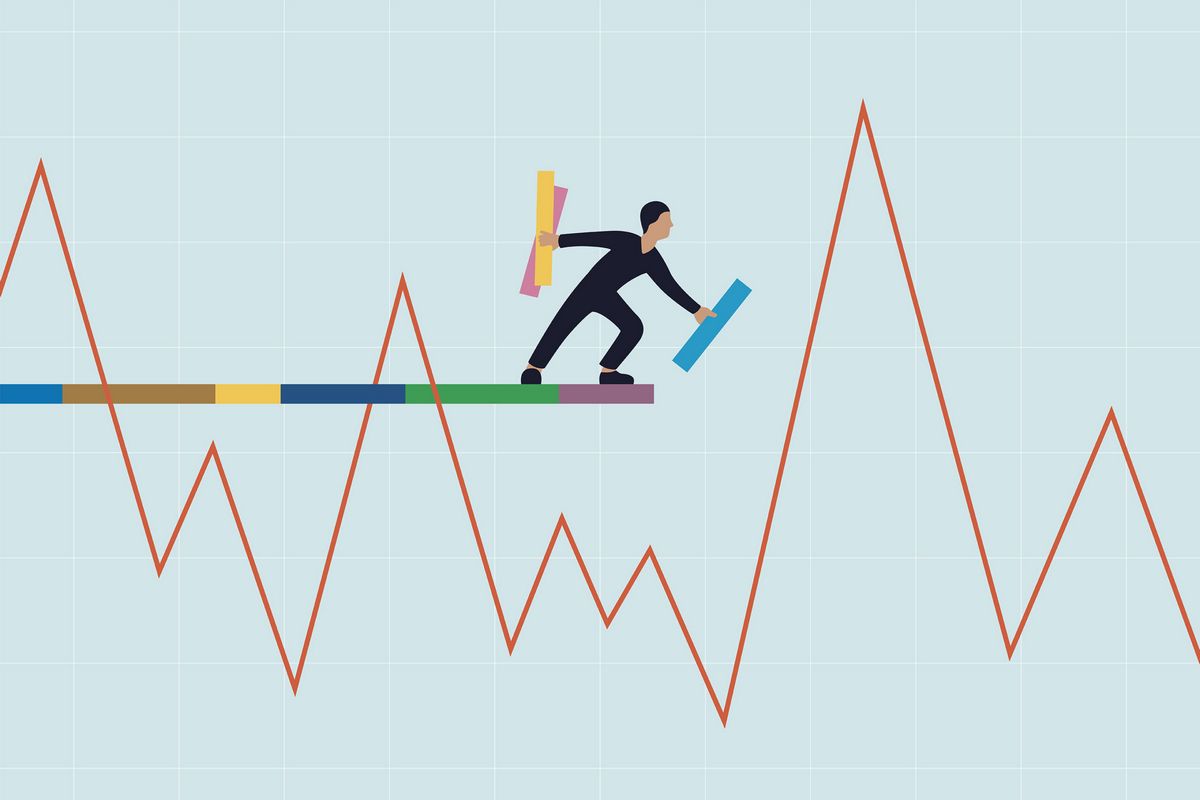Volatility Meaning In Finance and How it Works with Stocks

Volatility: Meaning in Finance and How it Works with Stocks
What Is Volatility?
Volatility is a statistical measure of returns for a security or market index. The higher the volatility, the riskier the security. Volatility can be measured using the standard deviation or variance of returns.
In the securities markets, volatility is associated with big swings in either direction. When the stock market rises and falls more than one percent over a sustained period, it is called a volatile market. Volatility is important for pricing options contracts.
Key Takeaways
– Volatility represents how large an asset’s prices swing around the mean price—it is a statistical measure of its dispersion of returns.
– There are several ways to measure volatility, including beta coefficients, option pricing models, and standard deviations of returns.
– Volatile assets are considered riskier than less volatile assets because the price is expected to be less predictable.
– Implied volatility measures how volatile the market will be while historical volatility measures price changes over predetermined periods of time.
– Volatility is an important variable for calculating options prices.
Understanding Volatility
Volatility refers to the uncertainty or risk related to changes in a security’s value. A higher volatility means the price can change dramatically over a short time period. A lower volatility means the price is more steady.
To measure an asset’s variation, quantify the daily returns of the asset. Historical volatility is based on historical prices and represents the degree of variability in the returns. Volatility can be reported on a daily, weekly, monthly, or annualized basis.
How to Calculate Volatility
Volatility is often calculated using variance and standard deviation. The standard deviation is multiplied by the square root of the number of periods in question.
For simplicity, assume monthly stock closing prices of $1 through $10. To calculate variance:
1. Find the mean of the data set. Divide the sum of all values by the number of values.
2. Calculate the difference between each data value and the mean.
3. Square the deviations.
4. Add the squared deviations together.
5. Divide the sum of the squared deviations by the number of data values.
The resulting variance is the square root of the standard deviation. Standard deviation is a measure of risk and shows how values are spread out around the average price.
Types of Volatility
Implied Volatility
Implied volatility allows options traders to determine how volatile the market will be. It does not provide a forecast of future market movement. Implied volatility comes from the price of an option and represents volatility expectations for the future.
Historical Volatility
Historical volatility measures the fluctuations of underlying securities over predetermined periods of time. It is based on historical price changes and is not forward-looking.
Volatility and Options Pricing
Volatility is a key variable in options pricing models. It estimates the fluctuation of the underlying asset between now and the option’s expiration. More volatile underlying assets result in higher options premiums. Traders try to predict an asset’s future volatility, which is reflected in the implied volatility of options.
Other Measures of Volatility
Beta
Beta measures the relative volatility of a stock to the market. It approximates the overall volatility of a security’s returns against a benchmark. For example, a stock with a beta value of 1.1 has historically moved 110% for every 100% move in the benchmark.
The VIX
The Volatility Index (VIX) is a measure of broad market volatility. It gauges the 30-day expected volatility of the U.S. stock market. Traders can use the VIX to price derivative products or trade options and exchange-traded products.
Tips on Managing Volatility
Long-term investors should ignore short-term volatility and stay on course. Emotions like fear and greed can undermine long-term strategies. Some investors use volatility as an opportunity to add to their portfolios by buying when prices are relatively cheap. Hedging strategies, such as buying protective puts, can also mitigate downside losses.
Example of Volatility
An investor building a retirement portfolio may choose stocks with low volatility and steady returns. For example, ABC Corp. has a beta coefficient of .78, making it less volatile than the market. XYZ, Inc. has a beta coefficient of 1.45, making it more volatile.
What Is Volatility, Mathematically?
Volatility is a statistical measure of data dispersion around its mean over a certain period. In finance, it represents the dispersion of market prices on an annualized basis.
Is Volatility the Same as Risk?
Volatility is often used to describe risk, but it is not always the same. Risk involves the chance of experiencing a loss, while volatility describes the size and speed of price movements. Increased volatility can increase the chance of losses.
Is Volatility a Good Thing?
The perception of volatility as good or bad depends on the trader and risk appetite. Long-term investors may view volatility as negative, while day traders may see it as an opportunity.
What Does High Volatility Mean?
High volatility means that prices are moving quickly and steeply in both directions.
What Is the VIX?
The VIX is a measure of short-term market volatility derived from S&P 500 options contracts. It is often called the "fear index" and indicates market sentiment.
The Bottom Line
Volatility measures how much and how quickly prices move over a given time period. Increased volatility can be a sign of fear and uncertainty among investors. However, volatility can also present trading opportunities. It is a key component in options pricing and trading.



